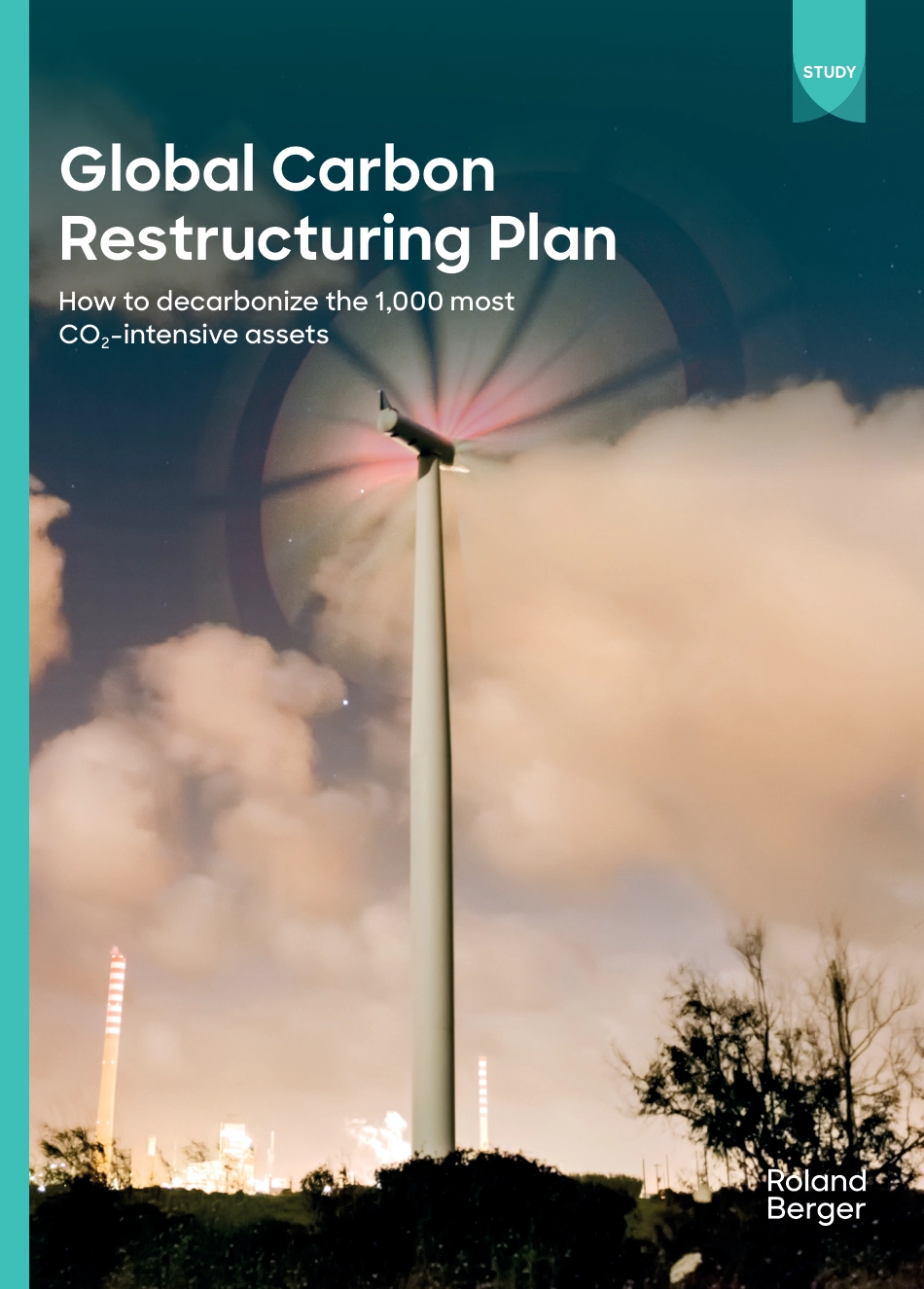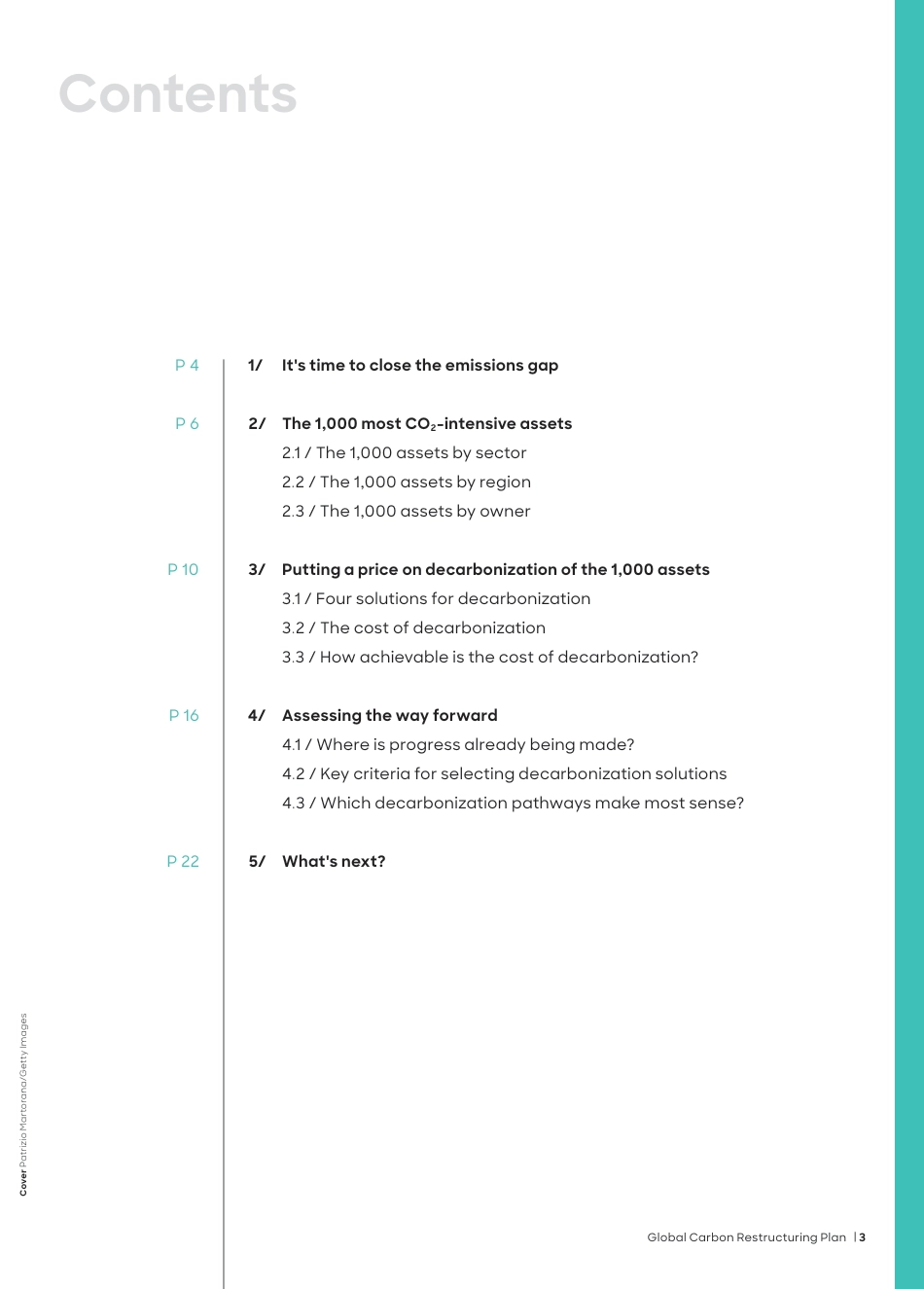How to decarbonize the 1,000 most CO2-intensive assetsGlobal Carbon Restructuring PlanSTUDYMANAGEMENT SUMMARYGlobal Carbon Restructuring Plan How to decarbonize the 1,000 most CO2-intensive assetsThe likelihood of complying with the Paris Agreement and limiting global warming to 1.5°C currently stands at just 14 %.1 Only a quantum leap forward in global sustainability efforts can significantly improve these odds and put the world on track for a more sustainable future.To do this, we must identify and implement the most impactful solutions as quickly as possible. By decarbonizing the 1,000 assets that emit the most CO2, our research shows we can reduce global carbon emissions by 8.2 gigatons (Gt). This is a third of the 24 Gt reduction in CO2 required by 2030 if we are to maintain our slim hopes of hitting the 1.5°C target. The 1,000 assets are a powerful source of momentum.So what are these assets? Unsurprisingly, coal-fired power plants dominate, contributing 76 % of CO2 emissions among our 1,000 assets. Iron and steel plants are the second-biggest contributor (18 %). More than half the 1,000 assets are in China, with India home to 13 % and the United States 10 %. Crucially, ownership of the 1,000 assets is concentrated among 406 companies. Indeed, just 40 companies own assets that produce half the 8.2 Gt of CO2 emissions. Decisive action from a small number of businesses could drastically improve climate protection. Our Global Carbon Restructuring Plan (GCRP) outlines how to achieve this significant impact by targeting the 1,000 most CO2-intensive assets. It outlines four potential solutions for decarbonization: renewable energy, gas, nuclear, and carbon capture and storage (CCS). We calculate t...



